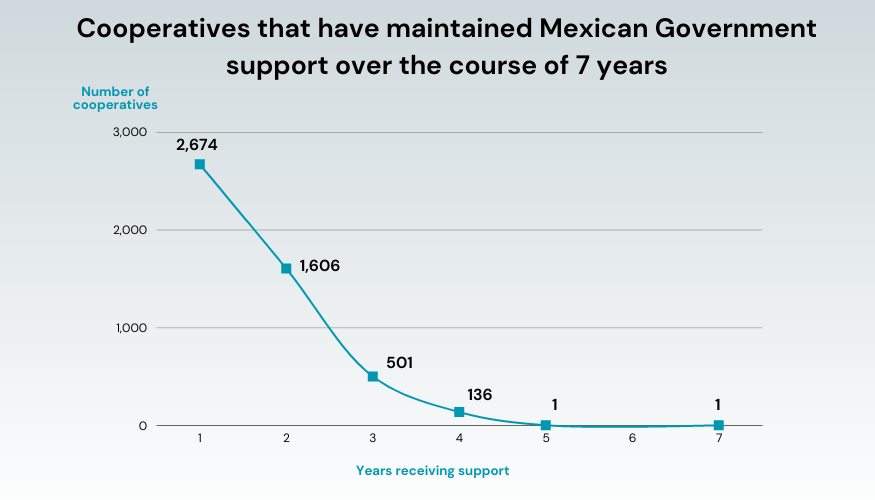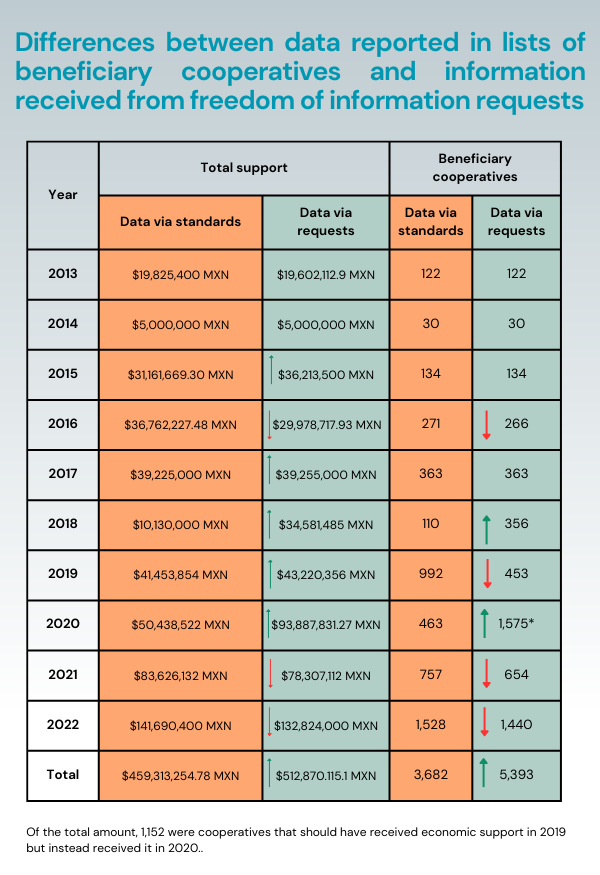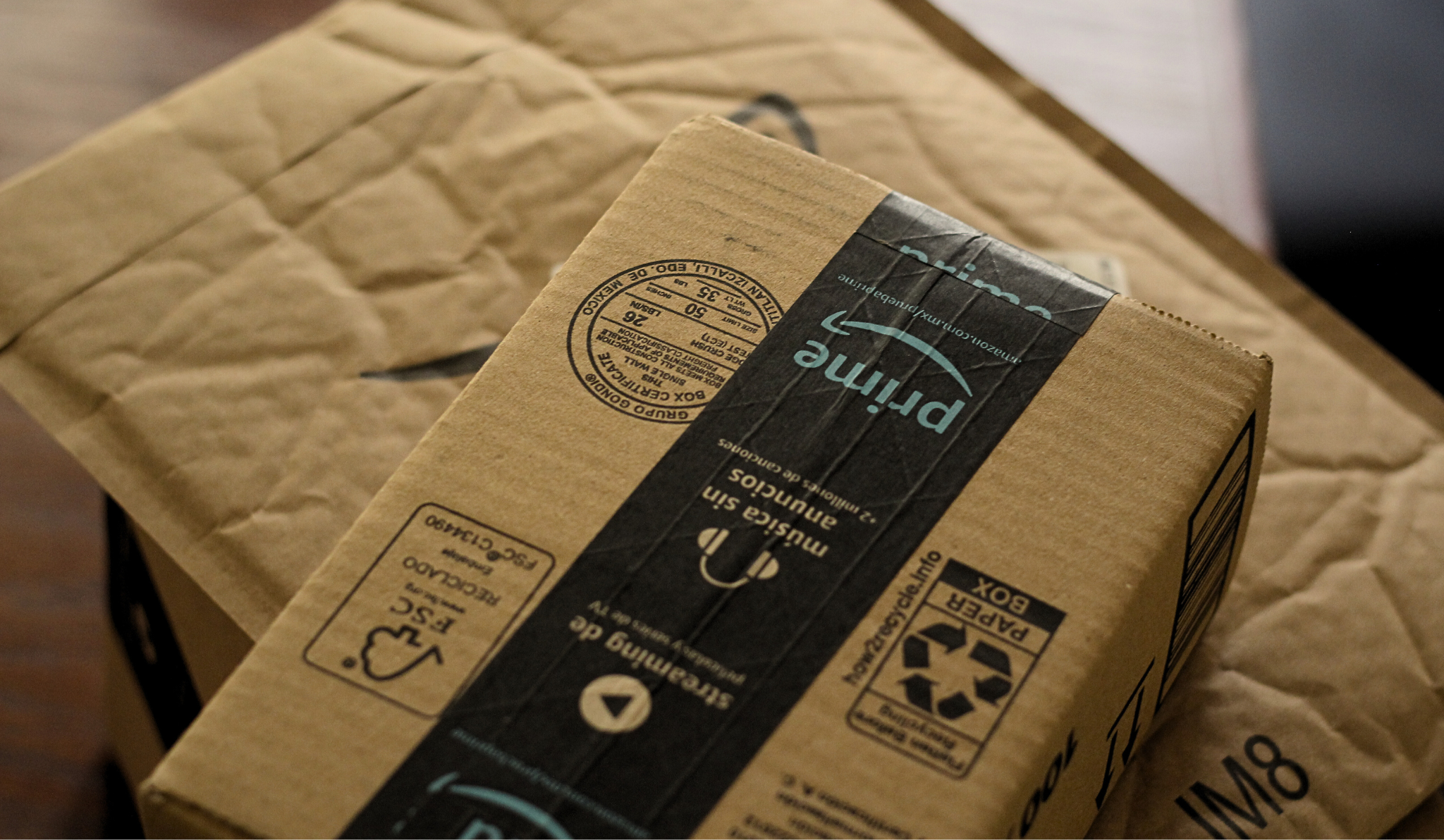
Cooperativism in Mexico: budget cuts and conflicting points of view
26 de July de 2023
Translated from Spanish
The budget for the National Institute of Social Economy, responsible for implementing and operating strategies for the development of cooperativism in Mexico, has fallen by 88% since the beginning of the presidential term of Andrés Manuel López Obrador in 2018. In Mexico, cooperativism has become intertwined with populist social policies, which has caused the movement to no longer be promoted as the basis for a more democratic, just economy. While different states have programs to support cooperatives and social organizations, a national registry of cooperatives does not exist, having been discarded in the 2012 Law of Social and Solidarity Economy and in its latest modification in 2019. Meanwhile, López Obrador conveniently promotes the cooperative movement in the regions where his mega-projects are being developed, such as with the Mayan Train in Quintana Roo.
By Claudia Ocaranza, with information from Santiago Ancheita
“We do support cooperativism,” said Mexican President Andrés Manuel López Obrador at his February 27, 2019 press conference in response to a reporter’s question about how cooperativism would be integrated into his economic project.1“Conferencia de prensa del presidente Andrés Manuel López Obrador 27 de febrero de 2019,” Presidencia de la República, 27 February 2019, www.gob.mx/presidencia/prensa/conferencia-de-prensa-del-presidente-Andrés-manuel-López-obrador-27-de-febrero-de-2019. Despite López Obrador’s statement, that year the budget of the National Institute of Social Economy (INAES), an independent body of the Secretariat of Welfare mandated to boost the social and solidarity economy, was cut by almost 70% compared to 2018. It went from having 1,979,206,256 Mexican pesos annually to only 629,362,530 a year later. The cuts have not stopped; in 2023, its budget is only 229,486,008 Mexican pesos.
Experts interviewed by Empower claim that INAES’s reduced budget is due to a change in strategy that includes breaking ties with the corporatism and unionism of old, in addition to austerity measures promoted by the President. However, an ambiguous law, the lack of a national registry of cooperatives, regional differences, and the lack of a deep understanding about cooperativism mean that it is still treated as a matter of social policy in Mexico and not as the basis for promoting a more democratic, just economy.
According to Eduardo Enrique Aguilar, cooperativist and research professor at the University of Monterrey, with the conversion of the Secretariat of Social Development (Sedesol) into the Secretariat of Welfare, there was a transfer of funds that “follows a corporate structure but from a different perspective, no longer as a petty cash box as INAES used to be.”
The new strategy is based on alliances with organizations such as the German Confederation of Cooperatives (DGRV) and the German Cooperation for Sustainable Development (GIZ),2“Hoja de Ruta sobre modelos de negocio comunitarios y cooperativos de energía sustentable,” Instituto Nacional de la Economía Social, 28 April 2022, www.gob.mx/inaes/documentos/hoja-de-ruta-sobre-modelos-de-negocio-comunitarios-y-cooperativos-de-energia-sustentable?idiom=es. and on national programs with local governments, such as Nodes for the Promotion of the Social and Solidarity Economy (NODESS), “a network of territorial alliances made up of at least three different actors: academic institutions, local governments, and Organizations of the Social Sector of the Economy (OSSE),” according to INAES.3“Nodos de Impulso a la Economía Social y Solidaria NODESS,” Instituto Nacional de la Economía Social, 25 January 2023, www.gob.mx/inaes/acciones-y-programas/nodos-de-impulso-a-la-economia-social-y-solidaria-nodess-233732.
Notwithstanding, “the 70% cut to INAES does not make sense because it is not that the social sector of the economy does not need capital, resources, or support for its development. It does, of course, and what they are doing is dismantling the Institute, which was intended for that purpose. Historically, the private sector is strengthened because it has a sufficiently strong government sector with resources that are constantly injected into the private sector,” said Aguilar in an interview with Empower, who also holds a PhD in Political Economy of Development.
No national registry of cooperatives
With the inauguration of María Luisa Albores as head of the Secretariat of Welfare at the beginning of the López Obrador administration, a current of the cooperative movement, which had been successful in other countries, arrived in Mexico. This Spanish current is led by the Mondragon Corporation in Spain. Juan Manuel Martínez Louvier, the general director of INAES, studied his master’s degree in cooperative business management at Mondragon Unibertsitatea.4“Juan Manuel Martínez Louvier,” LinkedIn, accessed July 2023, mx.linkedin.com/in/juan-manuel-mart%C3%ADnez-louvier-0b73a2a2. Both appointments caused high expectations and excitement among those who have studied and promoted a change towards a social and solidarity economy.
The appointment of the Advisory Council for the Promotion of the Social and Solidarity Economy 2019-2024 of INAES was attended by people related to cooperativism, such as Hector Valdes Trejo, cooperativist; Cesar Escalona Fabila, general coordinator of planning and evaluation of INAES; María Luisa de la Garza, PhD in philosophy; and J. Sabas Ledesma Jaime, general manager of Caja Popular Las Huastecas, in addition to Albores and Martinez Louvier.5“Instalación del Consejo Consultivo de Fomento a la Economía Social y Solidaria 2019-2024,” Facebook INAES_Mx, 25 September 2019, www.facebook.com/308267215983831/posts/1802329066577631.
However, four years later, INAES has not published on its website who currently sits on the Council. According to Miguel Torres Cruzaley, a solidarity economy expert from the Andalusian School of Solidarity Economy, “with the changes and cutbacks, many of those members backed out,” he told Empower.
The last evaluation of the Program for the Promotion of Social Economy (PFES), operated by INAES to “strengthen the capacities and means of the Organizations of the Social Sector of the Economy (OSSE),” was conducted in 2019-20 by the National Council for the Evaluation of Social Development Policy (CONEVAL),6“Ficha inicial de monitoreo 2019-2020. Programa de Fomento a la Economía Social,” CONEVAL, accessed July 2023, https://transparencia.inaes.gob.mx/doctos/pdf/transparencia/FICHA_MONITOREO_EVAL_2019_2020/FIMyE_S017_2019_2020.pdf. which found that the program supported 2,539 OSSEs in 2019, “80% less OSSEs than in 2018.” One of the causes cited by CONEVAL was the reduction of INAES’s budget. Article 52 of the Social and Solidarity Economy Law stipulates that there must be a compliance evaluation every three years. Although some audits were conducted by the Superior Auditor of the Federation (ASF) in previous years, there have been no new audits since 2020.
For Aguilar, author of the book Co-laboramos. Manual sobre cooperativas, the problem began with the origin of said law, created in 2012, which ignored popular demand at the time to create a national registry of cooperatives. The law was amended in 2015 and 2019, but the creation of the registry was never included.
“The intention of the Law is one of co-optation, of the State being able to control yet another sector. But it’s been done so badly that it does not even accomplish that, since it’s extremely ambiguous,” said Aguilar.
Torres Cruzaley adds that the first setback of the Law was when it went from being the responsibility of the Secretariat of Economy, as it had been since its enactment,7“Decreto por el que se expide la Ley de la Economía Social y Solidaria, Reglamentaria del Párrafo Séptimo del Artículo 25 de la Constitución Política de los Estados Unidos Mexicanos, en lo referente al sector social de la economía,” Diario Oficial de la Federación (DOF), 25 May 2012, www.dof.gob.mx/nota_detalle.php?codigo=5287618&fecha=23/05/2012#gsc.tab=0. to that of Sedesol, which added to the fact that Mexico has “a more social than economic vision of cooperativism,” which is still the case today.
The Law also establishes the existence of an Observatory of the Social Sector of the Economy, promoted by INAES, but there are few references to it on its website and the official website instead links to a site about Pueblos Mágicos.8Pueblos Mágicos is a tourism program developed by the Mexican Secretariat of Tourism to promote small towns. See: “Osse,” accessed July 2023, www.osse.org.mx.
Cooperativism at the service of the presidential agenda
Just as there is no national registry of cooperatives, there is no single way of exercising the movement in the country. However, people interviewed for this article agree that the lessons learned at the state level do not translate into actions at the national level.
“Despite the rich history that exists at the local level in many parts of the country, it does not permeate beyond those niches, and there is a lack of recognition of this at the federal level,” Carolina Maldonado, an expert in gender, development, and economics from the Instituto Tecnológico Autónomo de México (ITAM) and the University of Sussex, told Empower.
For Maldonado, the current government’s lack of recognition of cooperativism as an economic movement is also reflected in the way López Obrador’s administration grants economic support.
“There is incompatibility between how social programs are delivered and a cooperative vision. The vision of individual support intents for each person to resolve their situation individually. For example, economic support for single mothers also helps grandmothers, as AMLO said. And that is a vision that does gel with cooperativism,” said Maldonado.
According to Torres Cruzaley, the place of cooperativism in the current administration gravitates around its usefulness for López Obrador’s objectives and mega-projects.
Examples exist. INAES and the Undersecretary of Productive Inclusion and Rural Development collaborate in the “Value Networks Strategy” of the Sembrando Vida program, through actions “in the area of Social and Solidarity Economy (…) to strengthen the organizational and entrepreneurial capacities of farmers.”9“Estrategia INAES-Sembrando Vida,” INAES, 31 August 2022, www.gob.mx/inaes/acciones-y-programas/estrategia-inaes-sembrando-vida.
“The beneficiaries of Sembrando Vida receive a monthly amount and another little bit goes into a fund that has to be used for social benefit, but there is not much monitoring of this. A new structure or network is generated, but it is conditioned upon participation in the program. This does not necessarily generate solid organizations, nor does it respond to how what comes out of the cooperatives is sold or what the connections are with the different markets,” explained Torres Cruzaley.
In January of this year, López Obrador met with members of the Union of Cooperatives Tosepan, located in Puebla, which has ties to the current Secretary of the Environment, María Luisa Albores10“President receives members of Tosepan cooperative of Puebla at Palacio Nacional”, López Obrador, 18 January 2023, Lópezobrador.org.mx/2023/01/18/presidente-recibe-en-palacio-nacional-a-integrantes-de-la-cooperativa-tosepan-de-puebla., who had organized the new social economy strategy at the Secretariat of Welfare from December 1, 2018 through September 2, 2020.
In May, the President invited Mara Lezama, Governor of Quintana Roo, to his daily press conference to announce a new plan to support cooperatives in that state, through which Section 4 of the Mayan Train will pass. “The multiplier effect in benefits of the Mayan Train led us to create this model, because we must give support and follow up to all the economic growth that will continue to produce new ideas, business models, and, in general, opportunities to achieve social welfare,” said Lezama.11“Versión estenográfica. Conferencia de prensa del presidente Andrés Manuel López Obrador del 8 de mayo de 2023,” Presidencia de la República, 8 May 2023, www.gob.mx/presidencia/articulos/version-estenografica-conferencia-de-prensa-del-presidente-Andrés-manuel-López-obrador-del-8-de-mayo-de-2023.
INAES did not respond to interview requests or questions sent for this article.
The case of CDMX: unmatched numbers and amounts
According to experts interviewed by Empower, although the Social Economy program of the Secretariat of Labor and Employment Promotion (STyFE) of Mexico City is one of the programs that works the most with grassroots communities, since it is divided into three sub-programs for the creation and strengthening of cooperatives, challenges remain.
Year after year the program increased its budget to reach more cooperatives and social organizations. Between 2013 and 2022, 3,682 cooperatives received 459,313,254.78 Mexican pesos from the program, according to data obtained via freedom of information requests and analyzed for this article. But only one cooperative received support for seven consecutive years, reaching an amount of 1,040,506.94 Mexican pesos.
The majority of the cooperatives (2,674) only received some economic amount over the course of one year. Meanwhile, the number of beneficiary cooperatives that repeated access to support for several years dropped considerably (1,606 received the resource for two years and only 501 for three years).

In 2023, the STyFE published in the Official Gazette that the program would allocate 140 million pesos to 770 cooperatives through the subprograms of promotion, creation, and strengthening.12“CDMX destinará 140 millones de pesos para 770 cooperativas,” La cooperacha, 13 January 2023 lacoperacha.org.mx/cdmx-destina-140-millones-pesos-para-cooperativas-2023. However, in a response to a freedom of information request13FOIA request 090163523000255, 9 May 2023. submitted by Empower, the local Secretariat responded that, for 2023, “there are still no cooperatives benefiting from the program” while the box accompanying the response marks “In process” for 2023.
Furthermore, the total amount of economic support per year and the number of cooperatives supported do not coincide between what is reported on the beneficiary lists and what the STyFE responded via freedom of information requests.
The case of greatest disparity is 2018 when, according to data analysis conducted by Empower using the program’s registry, the STyFE distributed 10,130,000 Mexican pesos among 110 cooperatives. But the Secretariat responded via freedom of information requests that, in 2018, it supported 356 cooperatives with a total of 43,581,485 Mexican pesos.

For Aguilar, the discrepancy in the data underscores the need for a national registry of cooperatives.
STyFE did not respond to interview requests or questions sent for this article.
Cooperatives are not enough
Traditionally, starting a cooperative has been a way for a family to gain access to economic aid for a family business, without necessarily functioning as a cooperative insofar as horizontal control and an equal distribution of profits. The Social Economy Law itself names as subjects of the law figures that are not cooperatives, such as ejidos and communities.
“It results in a generic law that, by allowing everything, inflates the numbers in terms of cooperatives,” explains Torres Cruzaley.
In 2019, 59% of 686 people representing cooperatives responded to a census conducted by the firm Parametría, provided to Empower by STyFE through a freedom of information request, that their reason for starting a cooperative was because “a family member brought other family members together.”14“Censo de empresas sociales y solidarias de la Ciudad de México,” Parametría, December 2019, www.transparencia.cdmx.gob.mx/storage/app/uploads/public/5fc/14b/a03/5fc14ba03b594925780758.pdf.
According to this study, the surveyed cooperatives earned an average of 20,070 Mexican pesos per month, which meant a monthly income per member of 5,358 pesos. The majority of those surveyed belonged to a cooperative with five members and had an average monthly income of 19,134 pesos. That is, most earned 3,827 pesos per month, just above the 3,139.20 pesos that was the minimum monthly wage in 2019.15Diana Quintero, “Salario mínimo en México: ¿cuánto subió y qué efectos tendrá?,” factorial, 27 June 2023, https://factorial.mx/blog/salario-minimo-mexico.
According to this data, 23% of respondents said that “they cannot pay debts and/or loans and support themselves” while another 23% responded that they have only “enough” to cover their bare minimum.
The experts interviewed by Empower agree on the need to move from a vision of cooperativism as a social policy to one that includes it as a basis for the country’s economic development, even aspiring to the creation of cooperatives in the large sectors of the economy and not just in the third (social) sector.
“There’s a fine line between being independent cooperatives and depending on external support or resources, but cooperatives always require long-term support. One year is nothing. It’s necessary for members to learn over time what happens in order to face and resolve conflicts and make decisions,” said Maldonado.
For the gender specialist, promoting cooperativism from an economic model and providing it with sufficient funds would also generate greater development opportunities for women, who find it difficult to integrate into formal employment as they are responsible for family care and economic support. This is why many opt to create cooperatives that allow them to work and carry out care work collectively.
For years, collectives, international organizations, civic organizations, cooperatives, and cooperative unions have been calling for the promotion of a social economy model to counteract the voracious effects of capitalism and as an alternative way of life and organization. Simel Esim, head of the Cooperative Service of the International Labor Organization (ILO), stated that the social and solidarity economy “has gained recognition for its role in creating and sustaining jobs and providing services for members, users, and communities during the COVID-19 pandemic. At a time when the call for new ways of doing business is growing, the social and solidarity economy can provide a foundation for an enterprise model that drives inclusion, sustainability, and resilience.”16“Interview with Simel Esim on ILO’s Latest Report,” Sosyal Ekonomi, 4 May 2022, sosyalekonomi.org/interview-with-simel-esim-on-ilos-latest-report.
1 “Conferencia de prensa del presidente Andrés Manuel López Obrador 27 de febrero de 2019,” Presidencia de la República, 27 February 2019, www.gob.mx/presidencia/prensa/conferencia-de-prensa-del-presidente-Andrés-manuel-López-obrador-27-de-febrero-de-2019.
2 “Hoja de Ruta sobre modelos de negocio comunitarios y cooperativos de energía sustentable,” Instituto Nacional de la Economía Social, 28 April 2022, www.gob.mx/inaes/documentos/hoja-de-ruta-sobre-modelos-de-negocio-comunitarios-y-cooperativos-de-energia-sustentable?idiom=es.
3 “Nodos de Impulso a la Economía Social y Solidaria NODESS,” Instituto Nacional de la Economía Social, 25 January 2023, www.gob.mx/inaes/acciones-y-programas/nodos-de-impulso-a-la-economia-social-y-solidaria-nodess-233732.
4 “Juan Manuel Martínez Louvier,” LinkedIn, accessed July 2023, mx.linkedin.com/in/juan-manuel-mart%C3%ADnez-louvier-0b73a2a2.
5 “Instalación del Consejo Consultivo de Fomento a la Economía Social y Solidaria 2019-2024,” Facebook INAES_Mx, 25 September 2019, www.facebook.com/308267215983831/posts/1802329066577631.
6 “Ficha inicial de monitoreo 2019-2020. Programa de Fomento a la Economía Social,” CONEVAL, accessed July 2023, https://transparencia.inaes.gob.mx/doctos/pdf/transparencia/FICHA_MONITOREO_EVAL_2019_2020/FIMyE_S017_2019_2020.pdf.
7 “Decreto por el que se expide la Ley de la Economía Social y Solidaria, Reglamentaria del Párrafo Séptimo del Artículo 25 de la Constitución Política de los Estados Unidos Mexicanos, en lo referente al sector social de la economía,” Diario Oficial de la Federación (DOF), 25 May 2012, www.dof.gob.mx/nota_detalle.php?codigo=5287618&fecha=23/05/2012#gsc.tab=0.
8 Pueblos Mágicos is a tourism program developed by the Mexican Secretariat of Tourism to promote small towns. See: “Osse,” accessed July 2023, www.osse.org.mx.
9 “Estrategia INAES-Sembrando Vida,” INAES, 31 August 2022, www.gob.mx/inaes/acciones-y-programas/estrategia-inaes-sembrando-vida.
10 “President receives members of Tosepan cooperative of Puebla at Palacio Nacional”, López Obrador, 18 January 2023, Lópezobrador.org.mx/2023/01/18/presidente-recibe-en-palacio-nacional-a-integrantes-de-la-cooperativa-tosepan-de-puebla.
11 “Versión estenográfica. Conferencia de prensa del presidente Andrés Manuel López Obrador del 8 de mayo de 2023,” Presidencia de la República, 8 May 2023, www.gob.mx/presidencia/articulos/version-estenografica-conferencia-de-prensa-del-presidente-Andrés-manuel-López-obrador-del-8-de-mayo-de-2023.
12 “CDMX destinará 140 millones de pesos para 770 cooperativas,” La cooperacha, 13 January 2023 lacoperacha.org.mx/cdmx-destina-140-millones-pesos-para-cooperativas-2023.
13 FOIA request 090163523000255, 9 May 2023.
14 “Censo de empresas sociales y solidarias de la Ciudad de México,” Parametría, December 2019, www.transparencia.cdmx.gob.mx/storage/app/uploads/public/5fc/14b/a03/5fc14ba03b594925780758.pdf.
15 Diana Quintero, “Salario mínimo en México: ¿cuánto subió y qué efectos tendrá?,” factorial, 27 June 2023, https://factorial.mx/blog/salario-minimo-mexico.
16 “Interview with Simel Esim on ILO’s Latest Report,” Sosyal Ekonomi, 4 May 2022, sosyalekonomi.org/interview-with-simel-esim-on-ilos-latest-report.




